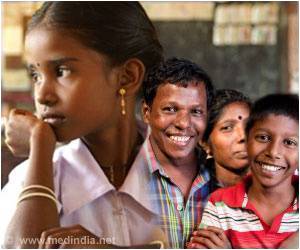In order to achieve the new goals, 47 countries must speed up progress, 34 of them in sub-Saharan Africa, and two, Afghanistan and Pakistan, in South Asia.

Geeta Rao Gupta, deputy executive director of the UN Children's Fund (UNICEF), said, "We have to acknowledge tremendous global progress. But the far too large number of children still dying from preventable causes before their fifth birthday should impel us to redouble our efforts to do what we know needs to be done."
The study was led by Danzhen You of UNICEF, and was the first to include estimates for 2015. It also made projections for child mortality in the coming 15 years. The new target is set at 25 or fewer under-five deaths per 1,000 live births by 2030.
The study authors said, "The unfinished business of child survival looms large. Every child's death represents the loss of a unique human being."
The study said, "In order to achieve the new goals, 47 countries must speed up progress, 34 of them in sub-Saharan Africa, and two, Afghanistan and Pakistan, in South Asia. Without intensified efforts to reduce child mortality, particularly in the highest mortality areas and in contexts with persistent inequities, the post-2015 SDG target will be unattainable. Child survival must remain at the heart of the SDG agenda."
Nearly half of infant deaths are associated with malnutrition, and 45% occur during the first 28 days of life. Leading causes are labor complications or premature birth, pneumonia, diarrhea, sepsis, and malaria. Th researchers found that West and Central Africa, the world's poorest regions, still have the world's highest under-five death rates.
Advertisement
Source-AFP










